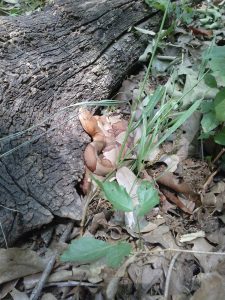Most species of snakes breed in the spring and summer, which is why most people see them during these two seasons. But, snakes can also be a common sight in the fall. With fall upon us, it is important to know what to do if you encounter a snake in the wild.
But first, it is worth knowing why snake sightings are a common fall occurrence as well. There are a few reasons for this. One, baby snakes usually are born in the summer. Fall is the perfect time for those that survived to start looking for their first meal before winter comes.
In addition, both adult and baby snakes start to search for safe places to hide where they will spend most of the winter in brumination, which is a term for the slowing down of their metabolism.

Lastly, some species of snakes also breed in the fall. A couple of examples include the rough green snake (Opheodrys aestivus) and the copperhead (Agkistrodon contortrix).
If you encounter a snake along a trail, be sure to observe from a distance. Most snakes will move quickly off the path while others might stay as still as possible. If you can, walk around the snake, giving it a wide berth.
The best course of action is to leave it alone and observe or take pictures from a distance. Most snake bites occur when people try to pick up, move or kill a snake, all of which are unnecessary. Another way to avoid snake bites is to always be mindful of where you are stepping or placing your hands while hiking a trail that is either paved or off-the-beaten path. Be sure to look where you are walking and never reach down to grab something unless you have complete visibility.
Be sure to learn more about snakes at River Legacy Living Science Center!
